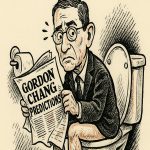Stock Market Fear and Greed Index Today: Forget It, Follow the Trend
March 23, 2025
“Forget about the so-called ‘Stock Market Fear and Greed Index Today’—it’s garbage. The crowd flips like a clueless donkey, scared one moment, euphoric the next. In the stock market, this index isn’t just a number; it’s a war zone of emotions. The real play? Buy the fear, sell the euphoria. But if you hesitate like a stubborn mule, buying too late and bailing too soon, you’ll be left starving while the sharp players feast.”
The Burro Theory: Timing is Everything
✅ Burros Buy Late, Sell Early:
The Burro Theory explains how the masses, like stubborn burros, lag behind market cycles. They fall into the trap of clinging to euphoria for too long and panic selling at the first sign of fear—resulting in missed opportunities and starving portfolios.
For example, during the tech bubble of 2000, many investors hopped on during soaring prices only to bail out in panic before the inevitable crash. This repeated behaviour shows that when the share market fear and greed index indicates joy (extreme greed), the masses often sell prematurely, only to regret it when the market rebounds.
Mass Psychology: The Catalyst for Market Reactions
Think of market sentiment as a chemical reaction. Mass psychology acts as a catalyst, accelerating reactions—whether in a frenzy of greed or a plunge into fear. When investors collectively overreact, the market experiences a sudden burst of volatility, similar to an exothermic reaction.
✅ Emotional Equilibrium:
As in chemistry, where reactions strive for equilibrium, market sentiment eventually corrects itself. Extreme fear sets the stage for robust buying opportunities, while extreme greed often leads to precipitous corrections. Recognizing these emotional inflexion points is crucial.
Technical Analysis: Fine-Tuning Your Entry and Exit Points
While mass psychology sets the overall stage, Technical Analysis (TA) is the microscope that refines your trading strategy. Once you’ve identified a market’s emotional state through the index, TA can help pinpoint precise entry and exit points.
✅ Combining Psychology with Precision:
- Buy the Fear: When the index dips into extreme fear, TA indicators like support levels, oversold RSI, and bullish divergence can confirm a buying opportunity.
- Sell the Joy: When the index reaches extreme greed, technical signals such as resistance levels and overbought conditions can signal it’s time to lock in gains.
A prime example is the COVID-19 market crash in March 2020. As fear spiked, TA tools indicated key support zones, and savvy investors bought in low. When the market recovered, technical sell signals helped capture gains—proving that merging mass psychology with TA offers a strategic edge.
The Chemistry of the Market
Imagine the market as a lab where emotions and data mix like chemicals. Fear and Greed are like reactants whose concentration levels determine the reaction speed. TA provides the periodic table of market behavior, letting you calculate the reaction kinetics. This chemical perspective reinforces the idea that equilibrium is reached only when extreme emotions neutralize each other, presenting golden opportunities for the disciplined trader.
In summary:
- Avoid being a burro: Act promptly by buying at extreme fear and selling during extreme joy.
- Leverage mass psychology: Understand the crowd’s behavior as a powerful catalyst.
- Apply TA: Use technical signals to fine-tune your market entries and exits.
Master these dynamics and transform your trading strategy from reactive to proactive—capitalizing on the very forces that typically leave the unprepared burro lagging.
Elevating Thought One Idea at a Time













